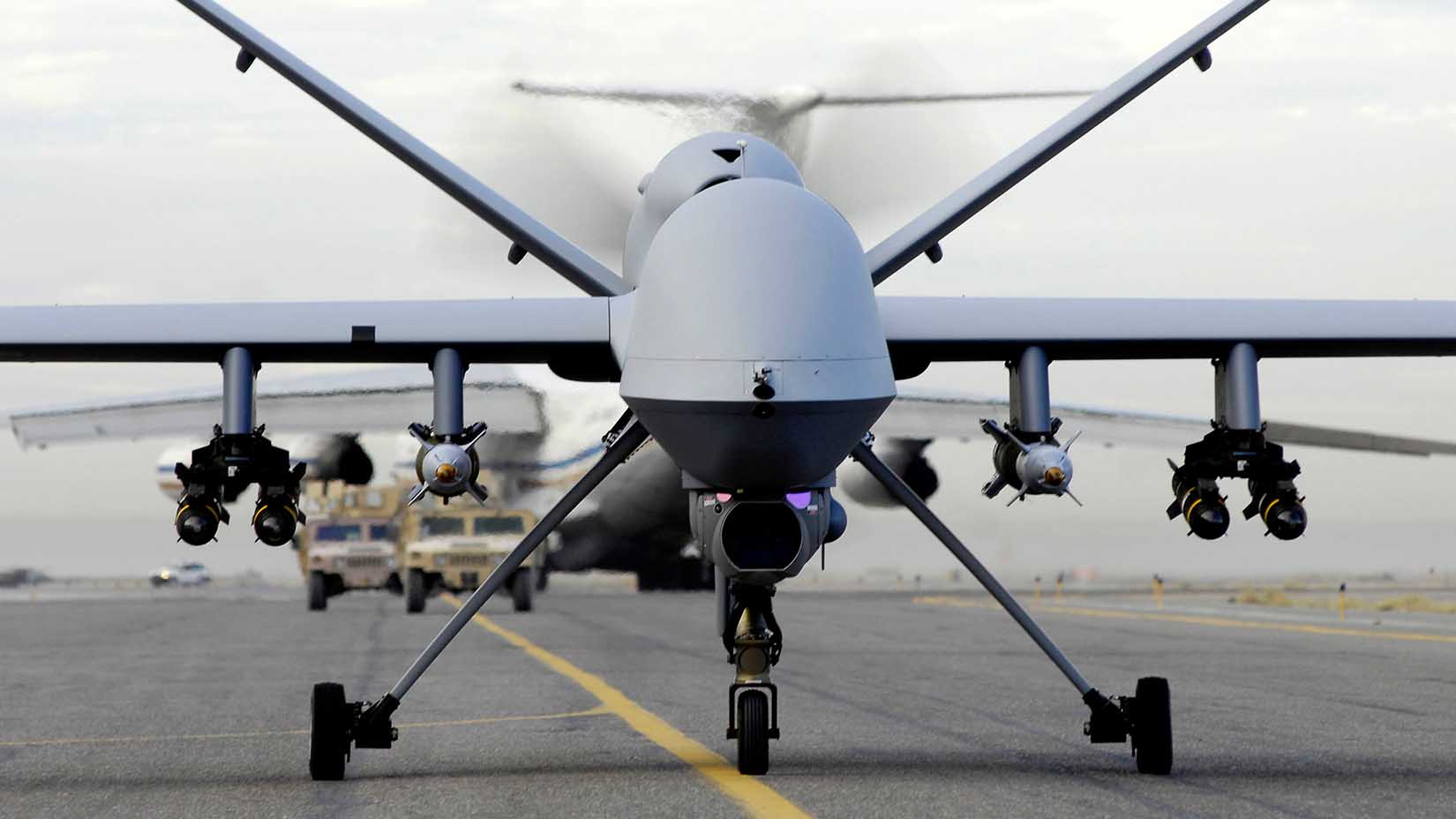The world’s highest resolution camera pointed at you?
The CIA and the Pentagon began experimenting with unmanned reconnaissance aircrafts (drones) in the early 1980s. Now, DARPA (Defense Advanced Research Projects Agency) and the US Army have taken the wraps off ARGUS-IS (Autonomous Real-Time Ground Ubiquitous Surveillance Imaging System, a 1.8-gigapixel video surveillance platform that can resolve details as small as 6 inches/15 cm from an altitude of 20,000 feet/6 km. The image is detailed enough to pick out birds flying through the sky. You can see individuals crossing the street. There’s actually enough resolution to be able to see you waving your arms and what kind of clothes you wear.

Wide area persistent stare
ARGUS can observe an area of 10 square miles/25 square kilometers at any one time. If it was hovering over New York City, it could keep an eye on half of Manhattan. ARGUS is the equivalent of having up to a hundred Predator drones look at an area the size of a medium sized city at once.
Argos was a 100-eyed giant from Greek mythology so it’s a suitable name since the 1.8 gigapixels are provided via 368 smaller sensors, focused on the ground via four image-stabilized telescopic lenses. ARGUS melts together video from each sensor. At 12 fps, the cameras generate on the order of 600 gigabits per second. This equates to around 6 petabytes, or 6,000 terabytes, of video data per day. The ARGUS system in its entirety produces one million terabytes per day – all of which is stored by the U.S. Army for future use. In theory, most of that data is actually meta data – the coordinates and other identifying features of the thousands of objects being tracked.
Some of the processing is done within ARGUS or the drone that carries it but most of the processing is done on the ground, in near-real-time, using a beefy supercomputer. The end result is a mosaic that can be arbitrarily zoomed and analysts can control over 100 tracking windows at one time, while still maintaining the broader context.
The software is called Persistics after the concept of persistent ISR – intelligence, surveillance, and reconnaissance. It’s tasked with identifying objects on the ground, drawing a colored box around humans, cars and other objects of interest. Everything that’s a moving object is being automatically tracked indefinitely.
Watch how you are being watched
Experts predict that there will be 30,000 surveillance drones in American skies by 2020 following a bill passed 2012 by U.S. Congress that permits the use of unmanned aerial spy vehicles on domestic soil.
“We’re moving to an increasingly electronic society where our movements are going to be tracked”, says Mary Cummings, MIT Humans and Automation Lab.
Thanks to the great level of detail, users can collect pattern-of-life data and track individual people inside the footage anywhere within the field of regard. All the data can be collected and overlaid with other data so organizations can identify people. The organizations can collect it, mark it with databases and integrate it with cell phone data and location data and also data about whom you’re interacting with.
With individuals’ comings and goings routinely monitored, databases are able build up records of where people live, work and play – what friends they visit, bars they drink at, doctors they visit, what houses of worship, or political events, or sexually oriented establishments they go to – and who else is at those places at the same time. Computers comb through this data looking for suspicious patterns and when the algorithms kick up an alarm, the person involved becomes the subject of much more extensive surveillance.
Now, consider this technology in the context of extra-judicial drone strikes initiated by artificial intelligence assessment parameters that automatically determine if you are a threat or not, and you can see how dangerous drones armed with these imaging systems will become.
Have the system been deployed in the field?
“I’m not at liberty to discuss plans of the government”, says Yiannis Antoniades.
Watch the full PBS Nova documentary here. At 30:42, you can watch the clip above in better resolution.
____________________
AI mini series
This blog post is part of a series about artificial intelligence. Here, you can read about AI pushing decision-making away from humans and migrate lethal decision-making from humans to software. You can also read about Artificial Super Intelligence (there’s also a chimpanzee, a shark, some cute sparrows and a baby owl involved). And here, you can read about all the good things that can happen for us when ASI arrives.




























